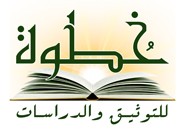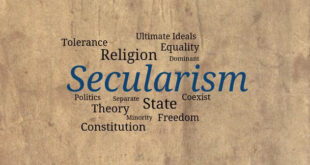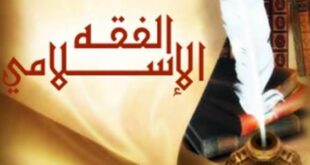Women’s Rights in Ijtihad
and Scholarly Contribution
Reflection on the Concept of Deficiency and its Interpretations
By: DR. Fatemah Hafez*
Cultural rights are an integral part of the human rights system guaranteed by Islam for all mankind. They include, among others: the right to education, the right to unrestricted access for information, and the right to Ijtihad (independent reasoning) & scholarly contribution. Besides other Islamic rights, these rights are based on the Quranic principles that encourage us to exercise our own reasoning. It is worth saying that Quran does not use the Arabic root of ‘Aqala (ع. ق. ل), which refers to reason, as a noun. Instead, it is mentioned in the Holy Quran as a verb to assure that it is an intellectual practice and not an essence or inanimate matter of no use. Allah Almighty asserts that reason leads to faith, as it provides the means for differentiating between truth and falsehood.
Allah Almighty says:
﴿وَإِذَا قِيلَ لَهُمُ اتَّبِعُوا مَا أَنزَلَ اللّهُ قَالُواْ بَلْ نَتَّبِعُ مَا أَلْفَيْنَا عَلَيْهِ آبَاءنَا أَوَلَوْ كَانَ آبَاؤُهُمْ لاَ يَعْقِلُونَ شَيْئاً وَلاَ يَهْتَدُونَ * وَمَثَلُ الَّذِينَ كَفَرُواْ كَمَثَلِ الَّذِي يَنْعِقُ بِمَا لاَ يَسْمَعُ إِلاَّ دُعَاء وَنِدَاء صُمٌّ بُكْمٌ عُمْيٌ فَهُمْ لاَ يَعْقِلُونَ﴾ (البقرة 170- 171)
“When it is said to them, “Follow what Allah has revealed,” they reply, “No! We ˹only˺ follow what we found our forefathers practicing.” ˹Would they still do so,˺ even if their forefathers had ˹absolutely˺ no understanding or guidance? (170) The example of the disbelievers ˹not responding to the Messenger’s warning˺ is like a flock not comprehending the calls and cries of the shepherd. ˹They are wilfully˺ deaf, dumb and blind so they have no understanding.” (ALbaqara:170-171)
If reasoning is vitally important as mentioned in Quran, then further research is needed with regards to the meaning of deficiency attributed to women’s reasoning in the Prophetic Hadith, i.e what is meant by the deficiency mentioned in the Hadith? What are its connotations? How it was interpreted across different historical eras? Did this concept deprive women of practicing Ijtihad, contributing to the academic field and playing a role in developing the religious sciences? Can we depend on this as a justification for the absence of women’s contribution to the field of Islamic sciences? Can we depend on this to claim that they are not qualified to practice Ijtihad?
In light of that we firstly, need to understand the concept of deficiency; its interpretations and the scholars’ commentaries about it. Secondly, we must reflect on the application of this stipulation unreal life (historical events).
Reflection on the Concept of Deficiency and its Interpretations
Abu Sa’id Al-Khudri (May Allah be pleased with him) narrated: “Once Allah’s Messenger (ﷺ) went out to offer the prayer of Eid (Al-Aḍḥā or Al-Fiṭr). Then he passed by the women and said, “O women! Give alms, for I have seen that you form the majority of the dwellers of Hell.” They asked, “Why is it so, O Allah’s Messenger (ﷺ)?” He replied, “You curse frequently and are ungrateful to your husbands. I have not seen anyone more deficient in intelligence and religion than you. A cautious sensible man could be led astray by some of you.” Those women asked, “O Allah’s Messenger (ﷺ)! What is deficient in our religion and intelligence?” He said, “Is not the evidence of two women equal to the witness of one man?” They replied in the affirmative. He said, “This is the deficiency in her intelligence. Isn’t it true that a woman can neither pray nor fast during her menses?” Those women replied in the affirmative. He said, “This is the deficiency in her religion.” (Reported by Al-Bukhari).
Some scholars have relied on this Hadith to prove that women are less intelligent, while men are more intelligent and superior. Al-Fakhr Ar-Rāzī (d. 606 H), in his Book of Tafsir, said:
Know that men are superior to women in many aspects; their nature and juridical rules. For their nature, the true virtues of a person rely on two things: knowledge and capability. Undoubtedly, men are wiser and more knowledgeable. In addition, they are more qualified for the hard work. Hence men are superior to women in terms of reason, determination, strength and almost composition.
In fact, Imam Ar-Rāzī did not determine exactly the essence of this deficiency. Yet, he mentioned that one can notice this in women’s bad memory which is, for him, due to the high levels of coldness and humidity in their moods[1].
Al-Bayḍāwī (d. 685 H), in his Book of Tafsir, has correlated between the testimony accepted by a woman and her reasoning deficiency. He commented on the fact that her testimony is equal to half of a man, saying, “Which is an indication of their reasoning deficiency and lack of accuracy”.[2]
In this regard, Ibn Al-Qayyim, in his book entitled Aṭ-Ṭuruq Al-Ḥakemah, quoted his teacher Ibn Taymiyyah (d. 728 H) saying: “This Prophetic Hadith asserts that a woman’s testimony is equal to half of a man due to her reasoning deficiency and not her religion deficiency.”…According to Ibn Taymiyyah, this deficiency is due to two reasons: her weak memory and lack of accuracy[3].
Ibn Al-Qayyim (d. 751 H) interpreted the fact of women’s testimony saying that any trustworthy woman is equal to any man in terms of honesty, truthfulness, and piety. Yet, because she is prone to forget, she needs support from an another woman which can make her stronger than a single man or his like[4].
On the other hand, Ibn Katheer (d. 774 H), unlike Ibn Al-Qayyim, believes that the fact that a woman’s testimony is equal to half of a man’s is strong evidence to prove her reasoning deficiency. Whereas, He said: “Two women stand equal to one man because of her deficiency.” In addition, he said that the testimony of two women together is also not equal to that of a single man. Yet, he did not mention the reason behind his opinion[5].
Ibn Ḥajar al ‘Asqalānī (852 H) answered a question raised by women about the meaning of the deficiency in her intelligence and religion mentioned in the Prophetic Hadith. He said: “The question itself proves their deficiency. They accepted the three defects attributed to them, which are their frequent curse, ungratefulness and their ability to lead a cautious sensible man astray. Instead, they questioned the idea of being deficient! In fact, the answer of the Prophet (PBUH) is very wise. With no harsh criticism or blame, He (PBUH) addressed them in a language they can understand. He set for them an example saying the fact that the testimony of two women is equal to the testimony of one man. He also mentioned the Saying of Allah Almighty: “…Then one man and two women of your choice will witness…”(2:282). Depending on another woman to accept the testimony refers to women’s lack of accuracy and naturally implies on her reasoning deficiency[6].
In addition to these opinions interpreting the Quranic Verse,
﴿… وَاسْتَشْهِدُواْ شَهِيدَيْنِ من رِّجَالِكُمْ فَإِن لَّمْ يَكُونَا رَجُلَيْنِ فَرَجُلٌ وَامْرَأَتَانِ مِمَّن تَرْضَوْنَ مِنَ الشُّهَدَاء أَن تَضِلَّ إْحْدَاهُمَا فَتُذَكِّرَ إِحْدَاهُمَا الأُخْرَى…﴾ (البقرة: 282)
“…Call upon two of your men to witness. If two men cannot be found, then one man and two women of your choice will witness—so if one of the women forgets the other may remind her….“,
In the light of the Hadith it has been concluded that a woman has reasoning deficiency when compared to a man who doesn’t only excel in reasoning but is also sometimes foreseen superior to her. However, some commentaries follow a different perspective, they neutrally and directly reflect on this Quranic Verse without depending on the Hadith to prove such deficiency. For Az-Zamakhsharī (d. 538 H), he said that a woman’s testimony is accepted according to Abu Ḥanifah except for matters related to limits (Ḥudud) and retribution (Qiṣāṣ). He interpreted Aḍ-Ḍalāl (Err), which was attributed to a woman in the Verse, as forgetfulness. In fact, he explained that Arabs used to say (Ḍalla aṭ- Ṭarreq) to describe the one who lost the directions on the road[7]. Al-Qurṭubī (d. 671 H) also mentioned that woman’s testimony is equal to half of a man because of her prone to forgetting. He said that the Arabic verb Taḍilla (to err) here means to forget. Err in testimony means to forget part of it. This leads a person to be confused and lost. For the one who forgets the whole details of his testimony, Ḍalla is not used to describe his action[8]. He did not see in this any belittling to her mental abilities. In addition, Al-Khāzin (d. 741 H) had a similar opinion, as he did not find any sign in the Verse denoting a woman’s reasoning deficiency or a man’s superiority. Thus, he just collected different opinions of Fiqh scholars about women’s testimony[9].
In conclusion, the claim that a woman has less mental abilities is not an absolute belief for all earlier scholars. Yet, some of them adopt different opinions. For example, Ibn Ḥazm Al-Andalusī (d. 456 H) finds that a woman’s testimony is accepted with no exceptions or limits. On the other hand, different scholars who believe in women’s reasoning deficiency limit this deficiency to two aspects only: her lack of accuracy and weak memory. According to this interpretation, it is a partially limited defect that does not prove her weak mental ability, low natural intelligence or the lack of the needed mental qualifications to seek knowledge and contribute to the scholarly field.
The claim of her deficiency, for modern scholars, has a different interpretation. The reason for women’s reasoning deficiency, according to Imam Muhammad ‘Abdo (d. 1905 AD), is not due to her weak memory or lack of accuracy. For him, the reason is excluding women from the public sphere in a way that left them with a rusty mindset; apart from growth and development. He has set an example to prove this situation by saying that the financial institutions only employs men. Thus, it is not surprising to see women with low mental mathematical skills[10].
Other exegetists did not adopt the approach of Imam ‘Abdo in explaining the deficiency in the light of historical and social factors affecting women’s perceptions. With the twentieth century’s scientific progress, we found those who interpret the Quran and Sunnah in the light of biological and anatomical discoveries. They argue that modern science has demonstrated the superiority of man’s mind anatomically. For example, it has been scientifically proven that a man’s mind is greater in weight than a woman’s mind. For example, Sheikh Mustafa Al-Ghalāyini (d. 1944 AD) dedicated his book, entitled Nadharāt fi As-Sufour wal Ḥijāb (Reflections on woman’s dazzling display of her adornment Vs Hijab), to the issue of women’s reasoning deficiency. He said that the reason (for her deficiency) is the weakness of her anatomical structure. Similarly, many contemporary exegetists explained that women’s deficiency is due to their sensitivity and the mood swings that they experience at certain instances.
Moreover, the end of the twentieth century witnessed the first attempts that can be described as reason-based interpretations on the issue of women’s deficiency mentioned in the Noble Hadith. In this regard, two devoted attempts appeared. The first attempt is by Sheikh Muhammad al-Ghazālī (d. 1996 AD), while the second is by Professor ‘Abd al- Ḥalim Abu Shuqqah (d. 1995 AD). Their attempts follow an Islamic perspective and depend on epistemological tools approved by earlier scholars.
Sheikh Al-Ghazālī, in his book Mi’at Sou’al ‘An il-Islam (A Hundred Questions on Islam), sees that we have to understand the concept of mental deficiency in the light of the introduction of the Hadith. It talks about a specific group of women who live under the custody of men and enjoy all their financial rights, yet they show ingratitude and deny men’s rights. The intended mental deficiency is attributed to this group only. The rest of the Hadith proves that this is true, as it refers to their dominance over men’s minds. Thus, Al-Ghazālī rejected any generalization, saying, “A group of religious speakers wanted to interpret from this Hadith matters that have nothing to do with it, so they have formulated a general rule and spread it worldwide stating that women are deficient in intelligence and religion. Whether the wordings usage denotes all women or a specific group of them, this generalization is not accepted in terms of reason and Revelation. The world has witnessed, in the past and modern times, many devoted women who lived for the sake of Allah and His Messenger and played a pivotal role in supporting religion. In fact, this generalization contradicts the Quranic Verses stating that women and men are from each other, and the Hadiths stating that women are the counterparts of men. According to Al-Ghazālī, the problem for these people is not in generalizing the Hadith, but rather in wrongly interpreting it by stating that mental deficiency is due to their foolishness and that the lack of religion is due to their disobedience. For him, this echoes the mindset of the generation of the pre-Islamic stage[11].
Regarding the attempt of Professor Abu Shuqqah which was included in his book Tahrir ul Mar’ah fi ‘Aṣr ir Risālah (Women’s Emancipation during the Prophet’s Lifetime), it can be viewed as the most wise and comprehensive interpretation. He argued that this Hadith should be studied from three aspects: its occasion, the female addressees and the linguistic style.
Regarding its occasion, the text was said during a sermon delivered to women during Eid. It is impossible that the Prophet (PBUH), who has a great character, would degrade the dignity of women, or humiliate them on such a joyful occasion. This is according to Abu Shuqqah’s conclusion.
Regarding the addressees, they were a group of Medina women, most of whom were Ansar. In fact, ‘Umar ibn al-Khattab described the women of Ansar as more assertive and that the immigrant women were influenced by their character.
Regarding the linguistic style of the text, Abu Shuqqah concludes that “the style does not denote that it is a general principle or a general Shari’ Ruling” – as Al-Ghazālī concluded before – but rather it may express the Messenger’s astonishment at the contradiction in the phenomenon of women’s dominance despite their weakness. He wonders, “Do the words imply that the Prophet (PBUH) is trying to add to his admonition to women some courtesy?” Perhaps, he compared this to the conversation of the Messenger (PBUH) with an old woman showing a sense of humor by saying, “No old woman will enter the Garden of Paradise!” but meaning that she will not enter it as an old woman but as a young woman. Regarding this last point, Abu Shuqqah’s conclusion is not strongly supported. In addition, it contradicts what is known about Messenger, that his humor does not contain any lies. Thus, the independent opinions focusing on the religious text related to women need to be studied through collective reasoning. No matter how much we value independent opinion, the collective opinions issued by specialized scholarly academies are better. That’s because they are less intuitive and have an authenticity that exceeds that of individual reasoning, which means that it can be reliable and generally applied[12].
We can conclude our reflection on the attempts of interpreting the concept of deficiency mentioned in the hadith with the following remarks:
First, deficiency is not mentioned in any other religious text. The concept is supported by a single text, and no other texts support it. On the contrary, there are many authentic texts urging Muslims to use their reasoning and rationale and seek knowledge. For example, Allah Almighty says: “…Only a party from each group should march forth, leaving the rest to gain religious knowledge then enlighten their people when they return to them…” (9:122). In addition, the Prophet Muhammad (PBUH) said: “Seeking knowledge is an obligation upon every Muslim.” These words are general speech for both men and women.
Second, proving women’s deficiency did not explicitly appear among the earlier exegetists. For example, Ath-Tha’labī or Ibn Ḥazm, who were among the exegetists of the fifth century, or Az-Zamakhsharī in the sixth century did not state this opinion. This opinion started to appear modestly in the beginning of the seventh century AH and established its roots during the next centuries. Through this, we can conclude that the opinion of women’s deficiency was gradually established during the eras of civilizational decline. It gained new connotations and meanings which undermine women’s capabilities, although it is apart from the understanding of earlier scholars.
Third, the opinion of women’s deficiency, across history, was not adopted to derive women away from the field of knowledge or to restrict them to a specific religious domain – the narration one, (Riwayah), not ijtihad (Dirayah). In fact, history has witnessed many examples of women who contributed in all domains. In addition, some men sought women to resolve a religious issue, like when ‘Umar Ibn Al-Khaṭṭab did to solve the issue of women’s dowries. Is the problem in the text itself or in our understanding of these texts? This question opens the door to discussing the text vis-à-vis reality dilemma in the Islamic experience.
Women and their Contributions in History
Since its first days, Islamic society has witnessed women’s presence in the scholarly field. In fact, not so few women devoted their lives to knowledge, as shown in books of history and biographies. We intend to mention some women’s contributions that were selected to reflect the societal disposition towards women’s Ijtihad. Through this presentation, the progress and decline of women’s contribution across history will be shown.
The first century AH witnessed a number of female knowledge practitioners at the top of them was ‘Aishah (may Allah be pleased with her). And of course, there is no room here to duly indicate her unquestionable stature on that matter. In addition, Zainab Al-Makhzoumiah (d. 73 AH), the daughter of Um Salamah, who narrated several hadiths on the authority of the Messenger, was one of the most knowledgeable women of her time. Abu Rafe’ described her: “If I were to choose the most knowledgeable women in Al-Madinah, I would choose Zainab bint Abu Salamah.” Umm AD-Darda’ also (d. 81 AH) was one of the most knowledgeable women of her time. She is a Hadith transmitter and her narrations were reported by other transmitters. She used to organize knowledge circles in her house. She also engaged in scholarly debates with men. Skillfully, she was known for her ability to refute some opinions and support others. What is remarkable about her biography is that the hedge that separates women and men was not observed at this early time, especially for knowledge seekers. It was narrated that she used to go with her husband to the mosque wearing a Burnous, and she would pray alongside men and organize circles to teach men the Qur’an. Later, Abu Ad-Dardaa’ told her to pray with women[13].
At the beginning of the second century AH, among the female Mujtahids was ‘Amrah bint Abdur–Rḥmān al-Anṣāriyyah (d. 102 AH), the stepdaughter of ‘Aishah (may Allah be pleased with her). She was an influential Hadith transmitter with a complete understanding of Islamic laws (Fiqh). It was said that she was a source of many jurisprudential rulings such as: prohibiting the sale of unripe fruits. According to some reports, she set a minimum value of the property stolen for the hand to be cut off. She forbade cutting off the hand for less than a quarter of a dinar (1 gram of gold). Due to her wide knowledge, knowledge seekers attended her circles. One of her students described her saying: “She is a vast ocean of knowledge.” She lived during the era of the caliph ‘Umar ibn ‘Abd al-‘Aziz who used to ask her about some religious issues. Before the death of Hadith scholars, the caliph ordered them to collect the Noble Hadith and she was among the scholars who were assigned for this mission.
With the spread of Islam worldwide, Khadijah al-Qayrawāniyyah (d. 270 AH) appeared in the third century in Morocco. She is the daughter of Imam Saḥnun, the well-known Maliki jurist. She was knowledgeable in Fiqh and a verdict (Fatwa) issuer. In fact, her father used to revert to her for consultation on some issues before issuing his judgment.
For the subsequent centuries, women’s scholarly contributions continued. In the fourth century, Fatimah bint ‘Abdil-Waḥed al-Mahamilī (d. 377 AH), who adh-Dhahabī described as the most skillful person in memorizing Fiqh, studied the Shafi’i school of thought with her father until she became a verdict issuer with Abu ‘Ali ibn Abu Hurairah[14]. In the sixth century, Fatimah as-Samarqandī emerged in the far east of the Islamic world. She is the daughter of Imam Mansour as-Samarqandī, the author of the famous book Tuhfat al-Fuqaha’, a famous text in Hanafi Fiqh. Due to her wide knowledge, her father used to discuss with her some verdicts. In fact, she used to add her comments and signature after her father’s. He did not feel any embarrassment in that, although he is a prominent Hanafi jurist.
By the eighth century AH – which witnessed the double attack launched by the Crusaders and the Tatars on the lands of Islam, the consequent decline in Ijtihad and the intensified efforts to preserve the Islamic identity – we notice the beginning of attempts preventing women from some practices in the public sphere. Yet, it could not prevent them from participating in Ijtihad or the academic field based on the “mental deficiency” argument. In this regard, the narrations of As-Safadi, a historian, about Fatimah bint ‘Abbas (in some narrations ‘Ayyash) (d. 714 AH) prove this.
Fatimah was born in Baghdad where she received knowledge from her sheikhs. She travelled to Damascus and then Cairo. She thoroughly studied Fiqh and became qualified to excel in debates against contemporary jurists on some issues. Being a contemporary of Ibn Taymiyyah, it seems that her high qualifications made her in a place of comparison with him by their contemporaries. As-Safadī said that “If I am to evaluate her, she would be close to Sheikh Taqi ud-Din [i.e., Ibn Taymiyyah]… we can say that she gains male attributes, but more, for her skill and knowledge. As-Safadī explains the dimensions of the relationship between her and Ibn Taymiyyah. he mentioned that Ibn Taymiyyah, despite his admiration and praises for her mind and intelligence, he had a subtle grudge because she used to ascend the pulpit. When he decided to advise her not to do so, he dreamt of the Messenger (PBUH) and he asked him about her and he (PBUH) informed him that she is a righteous woman[15]. What is important in As-Safadī’s narration on the authority of Ibn Taymiyyah is that it clearly indicates that the presence of women in the public sphere was not fully accepted anymore for some Fiqh scholars, and that the attempts to prevent women from engaging in the public sphere began to crystallize at that time.
Accordingly, the following centuries witnessed a further decline, during which, the number of female scholars in the books of biographers decreased. You can barely find female scholars of Fiqh. Women’s contributions at that time were largely confined to the fields of Hadith and Sufism, due to the connection of Fiqh and Fatwas at that time with the institution of the judiciary. However, we could not neglect, until the tenth century AH, the presence of ‘Aishah al-Ba’uniyyah (d. 922 AH), a female Fiqh scholar and verdict issuer. She was born in Damascus and traveled to Cairo where she received knowledge from sheikhs. Then, she was authorized to teach and issue verdicts (Fatwas) during the era of the Sultan Al-Ghuri, the last of the Mamluk Sultans. In fact, her deep knowledge qualified her to compose writings in Fiqh and literature, and some of her writings exit to this day.
But as women’s contribution to the scholarly field in the Arab region has diminished, it is more likely that sustained outside of it. For example, Zeb-un-Nissa, the daughter of Shah Muhyiddin Alamkir (d. 1113 AH), appeared in India. She memorized the Quran, thoroughly studied Islamic sciences, mastered Arabic linguistics and composed poetry. ‘Adel Nuwayhiḍ mentioned that Zeb-un-Nissa[16] composed a book in Tafsir entitled Tafsirs of Zeb. Whether this book is purely written by her or it is just a Persian translation of the Tafsir of Fakhr Az-Rāzy, it is considered the first attempt by a woman in the field of the sciences of the Holy Qur’an[17].
In the following historical eras, we can hardly find female scholars with such qualifications. Religious knowledge in general witnessed a great decline in the Ottoman era. Only explanations, footnotes, and comments were added to what have been written beforehand. Besides this scholarly decline, social and cultural life in general and for women in particular witnessed a similar decline affected by the Ottoman concepts and practices, at the top of which was the “Imperial Harem Institution” and its promoted values of exaggerated separation and the disapproval of women’s participation in the public sphere. Consequently, women were excluded from the circles of knowledge in the mosque. In addition, homeschooling was offered only to the daughters of the high and middle classes.
Through this brief historical presentation we can claim that women’s contribution in the scholarly field is an ongoing phenomenon. It did not witness a temporal or spatial gap throughout Islamic history, as it sustained across all fields of knowledge. And although we focused on the majority of the previous examples in the field of Fiqh, because women’s contribution in the field of Hadith is undebatable. it is worth noting that the number of female transmitters in the six authentic books of Hadith reached 132 women who all meet the qualification of acceptance and authenticity[18], namely: good faith, puberty, reason, trustworthiness, and good memory. No narration transmitted by them is refuted under the pretext of the deficiency mentioned in the Hadith. For example, Imam Ash-Shawkanī (d. 1250 H) said that there is no report stating that one of the scholars rejected a narration by a female transmitter because of her gender. Many of the narrations in the prophetic traditions (Sunnah) were accepted although it was transmitted by one female Companion. This fact cannot be denied even by those who have the slightest share of the knowledge of the Sunnah. In addition, it was not reported by any Muslim that he rejects the reports due to the possibility of its transmitter to forgetting. If this is a shortcoming, all Prophetic hadith would be doubted[19]. Perhaps, we can conclude that the text of the Hadith has not been generally interpreted to refer to all women. Yet, its application remained limited to the cases stipulated in the Hadith, which are women who frequently curse others- praying for expulsion from Allah’s mercy – and women who are ungrateful to their husbands, which are specific cases.
Women’s contribution in the field of Fiqh also calls for a reconsideration of the issue of the relationship of the Hadith/text with reality. Fiqh scholars accepted oomen’s Ijtihad and discussed it in their writings. For example, Ibn Ḥazm Al-Andalusī, Ibn Rushd, and Imam Al-Ghazālī did not set that a qualified Mujtahid should be a male. This implicitly means that women are included and among those who are entitled to perform Ijtihad. In addition, Imam An-Nawawī stipulated in his book Al-Majmu’ that qualified men and women are equally entitled to be verdict issuers –which is a type of Ijtihad. Ibn Qudamah al-Maqdisī accepted woman as a verdict issuer not as a judge. In addition, Imam As-Sarkhasī refuted the claim of those who said that the verdict is accepted only from the wives of the Prophet (PBUH) and not from other women, and considered it an invalid opinion.
Obviously, earlier Fiqh scholars, through their discussions, focused only on setting the conditions and legitimacy of Ijtihad and issuing verdicts for women. They did not address the deficiency of women’s mind. However, the later scholars did not follow their footsteps. Zakariya Al-Ansari, one of the scholars of the tenth century AH, discussed in his book “Ghayat alwusul Ila sharh lubi al‘usul” the conditions of the Mujtahid and referred to the issue of women’s deficiency. He stated that Ijtihad is not for men only, because (qualified) women also are entitled to perform Ijtihad despite their deficiency[20]. However, it seems that the right to Ijtihad will become questionable in the Ottoman era and the subsequent eras. A scholarly report prepared by some Sharia scholars in the early fourth century AH states a definition for the Mujtahid to be “A pious MAN with a good reputation who has a deep knowledge and correct understandings of the objectives of (Islamic) legislation and the secrets of Shariah.” This implicitly excludes women from the scope of Ijtihad. According to Rashid Rida’s description in Al-Manar journal, this establishes new principles apart from the early approaches[21].
In conclusion, we can sum up some remarks about the concept of deficiency stated in the Noble Hadith, as follows:
First: Deficiency intended is not generalized, as deficiency is not attributed to all women. It is only attributed to the types of women mentioned in the Noble Hadith. In addition, this deficiency could not prevent women from the scholarly contribution.
Second: The definition of deficiency set by the earlier scholars did not deviate from one of its two meanings, which are weak memory and lack of accuracy, while the latter is doubtful as the scholars of Hadith accepted narrations by female transmitters. Therefore, this deficiency does not intend to undermine women’s mental abilities or question their ability to enter the field and produce Knowledge.
Third: The concept of deficiency was used or rather rediscovered in the ages of cultural decline. This passed through two stages. The first stage marked the usage of this concept to criticize and discredit women’s Ijtihad. They intended to assert that women are deficient despite their independent reasoning. The second stage marked the usage -not only in arguments- of this concept to legitimize the process of excluding women from the field of knowledge and to justify social practices promoting separation and isolation.
In conclusion, this historical presentation shows that the problem is not in the religious text itself, but rather in our understanding and application. As we have noticed, the Hadith was used during a historical moment that witnessed a violent attack against Islam to destroy its ideological and cultural identity. In addition, it was established during the next ages that witnessed a weak Ijtihad movement and cultural decline. Thus, it is important to contextually reflect on this Hadith to understand the situation of this wording and its relationship with other religious texts if we want to reach a more accurate understanding.
***********
Translated by:
Rehab Jamal Bakri**
ـــــــــــــــــــــــــــــــــــــــــــــــــــــ
* PhD in History from the Faculty of Arts, Cairo University.
[1] أبو عبد الله محمد بن عمر بن الحسن بن الحسين التيمي الرازي الملقب بفخر الدين الرازي (606هـ)، مفاتح الغيب المسمى التفسير الكبير، بيروت: دار إحياء التراث العربي، 1420ه، 7/95.
[2] ناصر الدين أبو سعيد عبد الله بن عمر بن محمد الشيرازي البيضاوي (685هـ)، أنوار التنزيل وأسرار التأويل، بيروت: دار إحياء التراث العربي، 1418ه، 1/164.
[3] محمد بن أبي بكر بن أيوب بن سعد شمس الدين ابن قيم الجوزية (ت ٧٥١هـ)، الطرق الحكمية في السياسة الشرعية، الرياض: دار البيان، د/ت، ص 128.
[4] Ibid., p. 136.
[5] أبو الفداء إسماعيل بن عمر بن كثير القرشي البصري ثم الدمشقي (774هـ)، تفسير القرآن العظيم، تحقيق: محمد حسين شمس الدين، بيروت: دار الكتب العلمية، 1419، 1/660.
[6] أحمد بن علي بن حجر أبو الفضل العسقلاني الشافعي (852هـ)، فتح الباري شرح صحيح البخاري، رقم كتبه وأبوابه وأحاديثه: محمد فؤاد عبد الباقي، بيروت: دار المعرفة، 1/406.
[7] أبو القاسم محمود بن عمرو بن أحمد، الزمخشري جار الله (ت ٥٣٨هـ)، الكشاف عن حقائق غوامض التنزيل، بيروت: دار الكتاب العربي، 1407ه، 1/326.
[8] أبو عبد الله محمد بن أحمد بن أبي بكر بن فرح الأنصاري الخزرجي شمس الدين القرطبي (المتوفى: 671هـ)، الجامع لأحكام القرآن، تحقيق: تحقيق: أحمد البردوني وإبراهيم أطفيش، القاهرة: دار الكتب المصرية، 1384ه/1964م، 3/397.
[9] علاء الدين علي بن محمد بن إبراهيم بن عمر الشيحي، المعروف بالخازن (ت 741هـ)، لباب التأويل في معاني التنزيل، تصحيح: محمد علي شاهين، بيروت: دار الكتب العلمية، 1415، 1/215.
[10] محمد عبده، محمد رشيد رضا، تفسير القرآن الحكيم (تفسير المنار)، القاهرة: الهيئة المصرية العامة للكتاب، 1990، 3/104.
[11] محمد الغزالي، مائة سؤال عن الإسلام، القاهرة: المقطم للنشر والتوزيع، ص 385.
[12] عبد الحليم أبو شقة، تحرير المرأة في عصر الرسالة، القاهرة، الكويت: دار القلم، ط6، 2002، 1/275-276.
[13] شمس الدين أبو عبد الله محمد بن أحمد بن عثمان بن قَايْماز الذهبي (المتوفى: 748هـ)، سير أعلام النبلاء، بيروت: مؤسسة الرسالة، 4/278.
[14] الذهبي، سير أعلام النبلاء، 15/264.
[15] صلاح الدين خليل بن أيبك الصفدي (ت ٧٦٤هـ)، أعيان العصر وأعوان النصر، بيروت: دار الفكر المعاصر، 1998، 4/28-29.
[16] It is the only woman who is mentioned in Mu’jam Al-Muasereen, a book mentioning a list of the exegetists and their contribution from the first stages of Islam till the fourteenth century AH..
[17] عادل نويهض، معجم المفسرين من صدر الإسلام وحتى العصر الحاضر، بيروت: مؤسسة نويهض الثقافية للتأليف والترجمة والنشر، 1988، 1/197.
[18] Some historians mention that there is no woman who fabricated a Prophetic Hadith ever. Only some men fabricated Hadith.
[19] محمد بن علي بن محمد بن عبد الله الشوكاني (1250هـ)، نيل الأوطار، تحقيق: عصام الدين الصبابطي، القاهرة: دار الحديث، 1993، 6/360.
[20] زكريا بن محمد بن أحمد بن زكريا الأنصاري (926هـ)، غاية الوصول في شرح لب الأصول، القاهرة: دار الكتب العربية الكبرى، د/ت، ص 156.
[21] محمد رشيد رضا، المفتي والقاضي في الشرع، القاهرة: مجلة المنار، مج 6، 16 ذو الحجة 1321، 3 مارس 1904، 848-852.
** Egyptian Researcher and Translator.
Note: Translator’s References:
- Hadiths: (com) + (abuaminaelias.com)
- Quran: ( Mustafa Khattab, the Clear Quran)
 مركز خُطوة للتوثيق والدراسات Khotwa Center for Documentation& Studies
مركز خُطوة للتوثيق والدراسات Khotwa Center for Documentation& Studies





